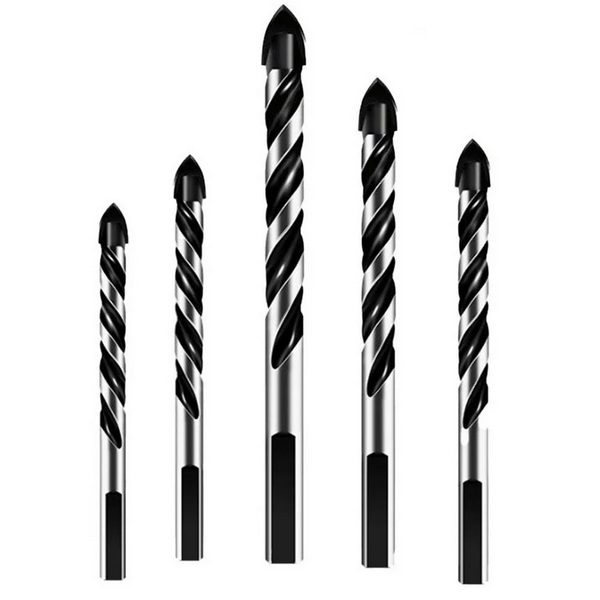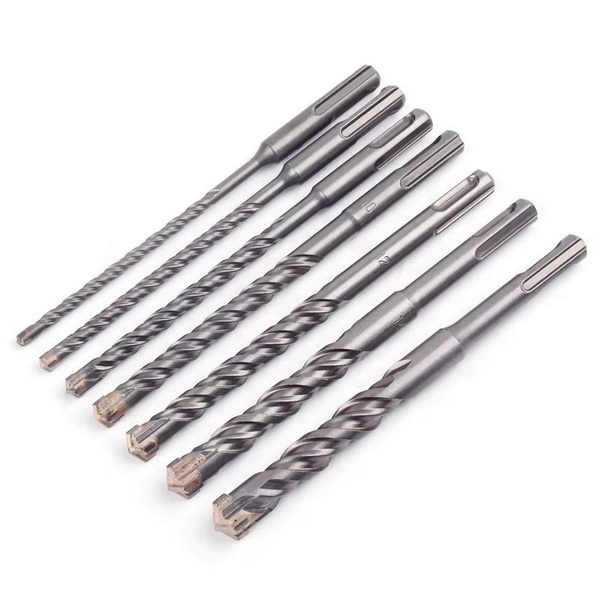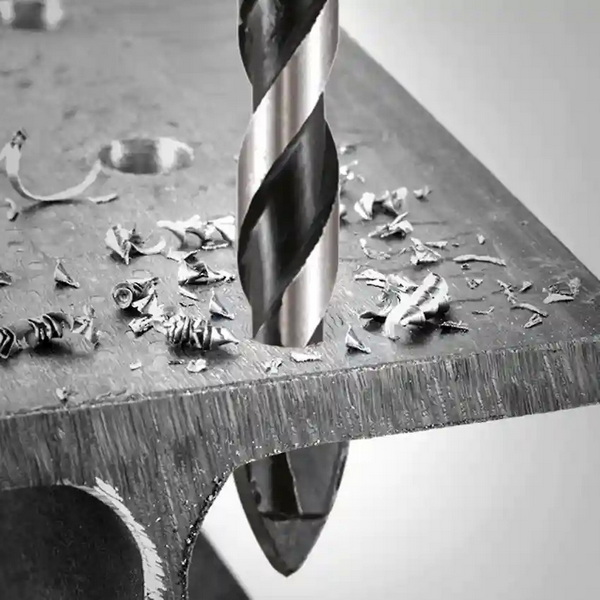Content Menu
● Understanding Tungsten Carbide Drill Bits
>> What is Tungsten Carbide?
>> Composition and Structure
● Types of Tungsten Carbide Drill Bits
● Benefits of Tungsten Carbide Drill Bits
>> 1. Exceptional Hardness and Durability
>> 2. High Heat Resistance
>> 3. Enhanced Cutting Precision
>> 4. Versatility Across Materials
>> 5. Reliability and Longevity
● Applications of Tungsten Carbide Drill Bits
>> Industrial Manufacturing
>> Construction and Masonry
>> Electronics and PCB Manufacturing
>> Woodworking and Carpentry
● How to Choose the Right Tungsten Carbide Drill Bit
● Maintenance and Safety Tips
● Advanced Techniques and Tips for Using Tungsten Carbide Drill Bits
>> Optimizing Drilling Speed and Feed Rate
>> Using Coolants and Lubricants
>> Peck Drilling for Deep Holes
>> Regrinding and Sharpening
● Environmental and Economic Considerations
>> Sustainability of Tungsten Carbide
>> Cost vs. Performance
● Conclusion
● FAQ
>> 1. What materials can tungsten carbide drill bits drill through?
>> 2. Are tungsten carbide drill bits better than high-speed steel (HSS) bits?
>> 3. Can tungsten carbide drill bits break easily?
>> 4. What types of tungsten carbide drill bits are available?
>> 5. How should I maintain tungsten carbide drill bits?
● Citations:
Tungsten carbide drill bits are specialized cutting tools made from a composite material consisting primarily of tungsten and carbon. Known for their exceptional hardness and durability, these drill bits are widely used in industrial, construction, and manufacturing settings to drill through extremely tough materials such as metals, concrete, ceramics, and composites. This article explores the composition, types, benefits, applications, and maintenance of tungsten carbide drill bits, providing a comprehensive guide for professionals and DIY enthusiasts alike.

Understanding Tungsten Carbide Drill Bits
What is Tungsten Carbide?
Tungsten carbide is a chemical compound composed of tungsten and carbon atoms bonded together to form an extremely hard material. It ranks between 9 and 9.5 on the Mohs hardness scale, making it one of the hardest substances available, second only to diamond (which rates 10). This hardness gives tungsten carbide drill bits their superior cutting ability and wear resistance compared to traditional steel or high-speed steel (HSS) bits.
Composition and Structure
Tungsten carbide drill bits are typically made by bonding tungsten carbide particles with a metallic binder, often cobalt, to create a composite material. This combination provides not only hardness but also toughness, allowing the bits to withstand high pressures and temperatures during drilling. Some drill bits are solid carbide, while others have tungsten carbide tips brazed or welded onto a steel shank to balance cost and performance.
Types of Tungsten Carbide Drill Bits
Tungsten carbide drill bits come in various shapes and designs tailored for specific applications:
| Type | Description | Common Uses |
| Twist Bits | Spiral fluted bits that remove debris efficiently; most versatile type | General-purpose drilling in metals, wood, plastics |
| Spade Bits | Flat, paddle-shaped bits with a sharp point for stability | Large holes in wood and softer metals |
| Hole Saws | Circular, hollow bits that cut wide holes and collect the core inside | Large diameter holes in wood, metal, masonry |
| Step Bits | Bits with a stair-step design for drilling multiple hole sizes without changing bits | Sheet metal, thin materials |
| Solid Carbide Bits | Entirely made of tungsten carbide, offering high precision and durability | Deep hole drilling, PCB manufacturing, hardened metals |
Benefits of Tungsten Carbide Drill Bits
1. Exceptional Hardness and Durability
Tungsten carbide drill bits are significantly harder than HSS or cobalt bits, allowing them to cut through tough materials like hardened steel, cast iron, concrete, and ceramics with ease. Their hardness also means they maintain sharp cutting edges longer, reducing the frequency of replacements and downtime.
2. High Heat Resistance
During drilling, friction generates heat that can dull or damage drill bits. Tungsten carbide bits withstand temperatures up to 1800°F (982°C), maintaining their cutting edge and performance even under high-speed or heavy-duty drilling conditions.
3. Enhanced Cutting Precision
The rigidity and dimensional stability of tungsten carbide allow for sharper cutting edges and precise hole sizes. This makes them ideal for applications requiring tight tolerances, such as printed circuit board (PCB) manufacturing where holes can be less than 1 mm in diameter.
4. Versatility Across Materials
Tungsten carbide drill bits can be used on a wide range of materials, including:
- Hardened and work-hardened metals (stainless steel, titanium, cast iron)
- Non-ferrous metals (aluminum, brass, bronze, copper)
- Concrete, masonry, and rebar
- Wood and wood composites
- Ceramics and tiles
5. Reliability and Longevity
Due to their toughness and heat resistance, tungsten carbide bits require less frequent maintenance and provide consistent performance over time, saving costs in industrial and construction projects.
Applications of Tungsten Carbide Drill Bits
Industrial Manufacturing
Tungsten carbide drill bits are essential in manufacturing for drilling precise holes in metals such as steel, aluminum, and titanium. Their ability to maintain sharpness and withstand heat makes them ideal for CNC machining centers and metal fabrication.
Construction and Masonry
In construction, these bits are used to drill through concrete, brick, and stone. Their carbide tips resist wear from abrasive materials and embedded rebar, making them indispensable for heavy-duty drilling tasks.
Electronics and PCB Manufacturing
The precision and small size of solid carbide drill bits make them perfect for drilling tiny holes in printed circuit boards, where accuracy and minimal material damage are critical.
Woodworking and Carpentry
While less common in domestic woodworking, carbide bits are used in industrial wood processing for clean, efficient drilling in hardwoods and composite materials.

How to Choose the Right Tungsten Carbide Drill Bit
When selecting a tungsten carbide drill bit, consider the following factors:
- Material to be drilled: Choose bits designed for the specific material (metal, masonry, wood).
- Bit type and size: Match the bit shape and diameter to the project requirements.
- Shank compatibility: Ensure the bit fits your drill chuck or machine.
- Coating and finish: Polished or coated bits offer better heat resistance and corrosion protection.
- Budget: Solid carbide bits are more expensive but offer superior performance; carbide-tipped bits provide a cost-effective alternative.
Maintenance and Safety Tips
- Use proper drilling speeds: High speeds generate heat; use recommended speeds for the material.
- Apply cutting fluid: Lubricants reduce friction and heat, extending bit life.
- Avoid excessive pressure: Let the bit do the work to prevent breakage.
- Wear protective gear: Goggles and gloves protect against flying debris and sharp edges.
- Store bits properly: Keep bits dry and clean to prevent corrosion and damage.
Advanced Techniques and Tips for Using Tungsten Carbide Drill Bits
Optimizing Drilling Speed and Feed Rate
To maximize the lifespan and efficiency of tungsten carbide drill bits, it is crucial to optimize drilling speed (RPM) and feed rate (pressure applied). Excessive speed can cause overheating, while too slow a speed may lead to inefficient cutting and premature wear. Manufacturers often provide recommended speed and feed charts based on the material being drilled.
Using Coolants and Lubricants
Applying coolants or cutting fluids during drilling helps dissipate heat and flush away debris. This reduces friction and prevents the carbide bit from overheating, which can cause micro-cracks or edge chipping. Water-soluble oils, synthetic coolants, or even compressed air can be used depending on the application.
Peck Drilling for Deep Holes
When drilling deep holes, peck drilling (periodically retracting the bit to clear chips) prevents clogging and reduces heat buildup. This technique is especially important when using carbide bits in metals to maintain hole quality and bit integrity.
Regrinding and Sharpening
Although tungsten carbide is very hard, it can be resharpened using diamond grinding wheels. Proper regrinding restores cutting edges and extends the bit's service life, but it requires specialized equipment and expertise.
Environmental and Economic Considerations
Sustainability of Tungsten Carbide
Tungsten carbide is a recyclable material. Used or worn-out drill bits can be collected and processed to recover tungsten and cobalt, reducing the environmental impact of mining new raw materials. Recycling also helps lower production costs and conserves natural resources.
Cost vs. Performance
While tungsten carbide drill bits are more expensive upfront than HSS or cobalt bits, their longer lifespan and superior performance often result in lower overall costs. Reduced downtime, fewer replacements, and higher quality work justify the investment, especially in industrial settings.
Conclusion
Tungsten carbide drill bits are indispensable tools in modern industry and construction due to their unmatched hardness, heat resistance, and precision. Their ability to drill through the toughest materials while maintaining sharpness and durability makes them a superior choice over traditional drill bits. Whether for heavy-duty metal fabrication, masonry work, or precision electronics manufacturing, tungsten carbide drill bits deliver reliable, efficient, and high-quality results. Investing in the right type and maintaining these bits properly ensures long service life and optimal performance. Additionally, understanding advanced drilling techniques and environmental considerations can further enhance their value and sustainability.

FAQ
1. What materials can tungsten carbide drill bits drill through?
Tungsten carbide drill bits can drill through hardened metals (steel, stainless steel, titanium), non-ferrous metals (aluminum, brass), concrete, masonry, ceramics, wood, and composites.
2. Are tungsten carbide drill bits better than high-speed steel (HSS) bits?
Yes, tungsten carbide bits are much harder and more heat resistant than HSS bits, allowing faster drilling and longer tool life, especially on tough materials.
3. Can tungsten carbide drill bits break easily?
While extremely hard, tungsten carbide can be brittle. Proper use with correct speed, pressure, and lubrication is essential to prevent breakage.
4. What types of tungsten carbide drill bits are available?
Common types include twist bits, spade bits, hole saws, step bits, and solid carbide bits, each suited for different drilling tasks.
5. How should I maintain tungsten carbide drill bits?
Use appropriate drilling speeds, apply cutting fluids, avoid excessive pressure, wear safety gear, and store bits in a dry, clean environment.
Citations:
[1] https://www.tungco.com/insights/blog/tungsten-drill-bits-benefits-uses/
[2] https://www.drillbitwarehouse.com/4-advantages-of-using-carbide-drill-bits/
[3] https://huanatools.com/carbide-drill-bit-applications-and-drill-size-chart/
[4] https://www.istockphoto.com/photos/tungsten-carbide-drill-bits
[5] https://www.midlandtool.com/blog/1184/carbide-drill-bits-everything-you-need-to-know
[6] http://blog.carbideprocessors.com/drill-bits/tungsten-carbide-drill-bits/
[7] https://www.drillbitwarehouse.com/5-commonly-asked-drill-bit-questions-answered/
[8] https://www.fastenere.com/drill-bit-multi-purpose-tungsten-carbide-tip
[9] https://www.zzcrcarbide.com/news/tungsten-carbide-drill-bit-classification-and-advantage-comparison/
[10] https://www.alamy.com/stock-photo/tungsten-carbide-tool.html
[11] https://ruwag.co.za/blogs/news/everything-you-need-to-know-about-carbide-drill-bits
[12] https://www.repurvis.com/articles/tungsten-carbide-bits-explained
[13] https://www.kennametal.com/us/en/resources/blog/metal-cutting/how-to-choose-the-right-carbide-drill-bit.html
[14] https://www.drillbitwarehouse.com/what-materials-can-you-use-carbide-drill-bits-on/
[15] https://www.speedtigertools.com/solution/ins.php?index_id=102
[16] https://www.kennametal.com/us/en/resources/blog/metal-cutting/tungsten-carbide-versus-cobalt-drill-bits.html
[17] https://miasecretstore.com/products/tungsten-carbide-drill-bits
[18] https://www.tivoly.com/en/choose-hss-drill-carbide-drill
[19] https://www.midlandtool.com/blog/1184/carbide-drill-bits-everything-you-need-to-know
[20] https://www.tungstenman.com/tungsten-carbide-tools/oil-gas-drill-bits.html
[21] https://www.rubi.com/us/product/tungsten-carbide-drill-bits
[22] https://www.speedtigertools.com/solution/ins.php?index_id=102
[23] https://www.homedepot.com/p/Bosch-Daredevil-1-2-in-Multi-Purpose-Tungsten-Carbide-Drill-Bit-for-Drilling-Tile-Masonry-Wood-Metal-and-Concrete-MP16/301354973
[24] https://www.reddit.com/r/Machinists/comments/phsfo3/hss_or_carbide_how_do_you_know/
[25] https://guesstools.com/la/tungsten-carbide-drill-bits-for-metal/
[26] https://www.tungstenman.com/tungsten-carbide-tools-the-pros-and-cons.html
[27] https://www.shutterstock.com/search/tungsten-drill-bits
[28] https://miasecretstore.com/en-in/products/tungsten-carbide-drill-bits
[29] https://stock.adobe.com/search?k=tungsten+carbide
[30] https://www.shutterstock.com/search/tungsten-drill
[31] https://www.shutterstock.com/search/tungsten-carbide-tool?image_type=illustration
[32] https://www.drillbitwarehouse.com/product-category/carbide-drill-bits/
[33] https://www.bladesmithsforum.com/index.php?%2Ftopic%2F41502-tungsten-carbide-drill-bits%2F
[34] https://www.istockphoto.com/photos/tungsten-carbide-drill-bits?page=3
[35] https://www.homedepot.com/p/questions/Bosch-Daredevil-1-2-in-Multi-Purpose-Tungsten-Carbide-Drill-Bit-for-Drilling-Tile-Masonry-Wood-Metal-and-Concrete-MP16/301354973/3
[36] https://www.reddit.com/r/metalworking/comments/1i5knzt/what_am_i_doing_wrong_ive_dulled_3_carbide_drill/
[37] https://www.linkedin.com/pulse/drill-bits-carbide-toolings-miya-wang
[38] https://www.youtube.com/watch?v=w-GOYNAltEw
[39] https://www.practicalmachinist.com/forum/threads/tungsten-carbide-drill-bits.274218/
[40] https://www.homedepot.com/p/questions/Bosch-Daredevil-5-16-in-Multi-Purpose-Tungsten-Carbide-Drill-Bit-for-Drilling-Tile-Masonry-Wood-Metal-and-Concrete-MP09/301354975/3
[41] https://shop.machinemfg.com/the-pros-and-cons-of-tungsten-carbide-a-comprehensive-guide/
[42] https://www.practicalmachinist.com/forum/threads/proper-usage-of-carbide-drill-bits.298277/
[43] https://www.retopz.com/57-frequently-asked-questions-faqs-about-tungsten-carbide/
[44] https://www.cobracarbide.com/what-are-carbide-drill-bits-good-for/
[45] https://www.alamy.com/stock-photo/tungsten-carbide.html
[46] https://eternaltools.com/products/carbide-micro-drills
[47] https://www.fastenere.com/drill-bit-multi-purpose-tungsten-carbide-tip
[48] https://www.reddit.com/r/metalworking/comments/1j05mx0/drilling_hardened_steeltungsten_carbide_drill_bits/
[49] https://ctpcryogenics.com/carbide-drill-bits/
















